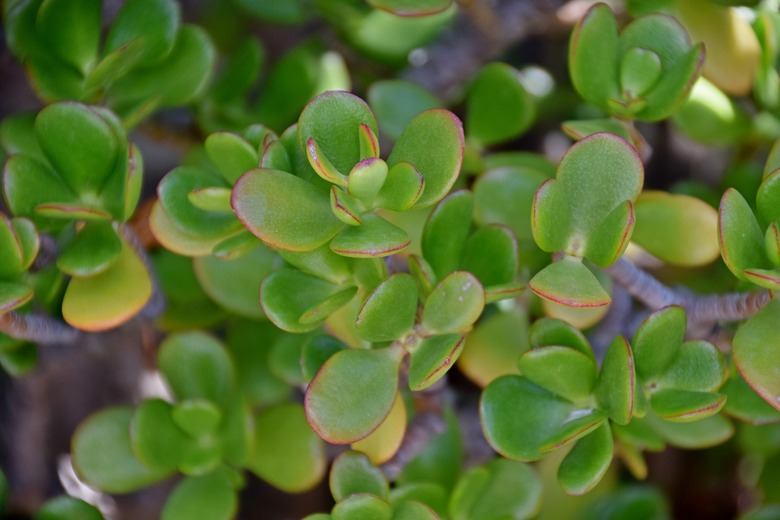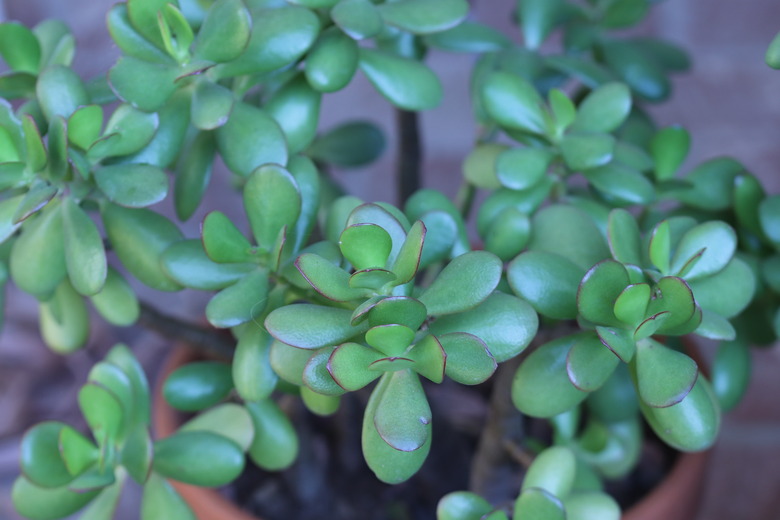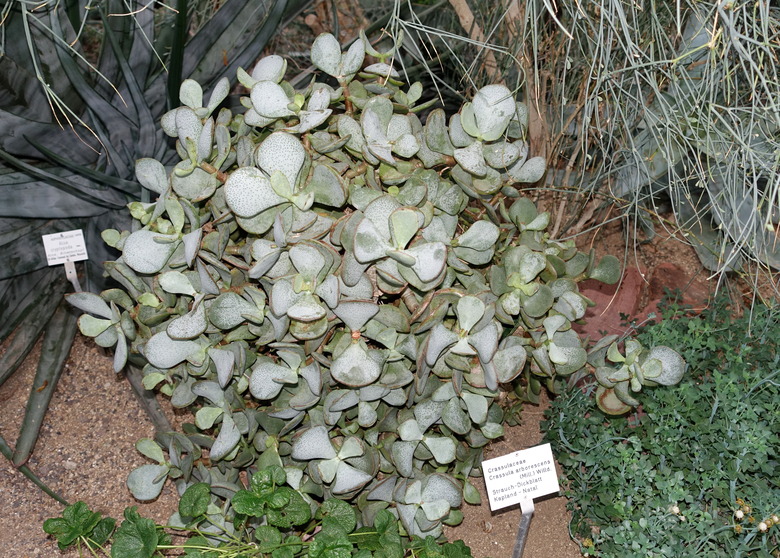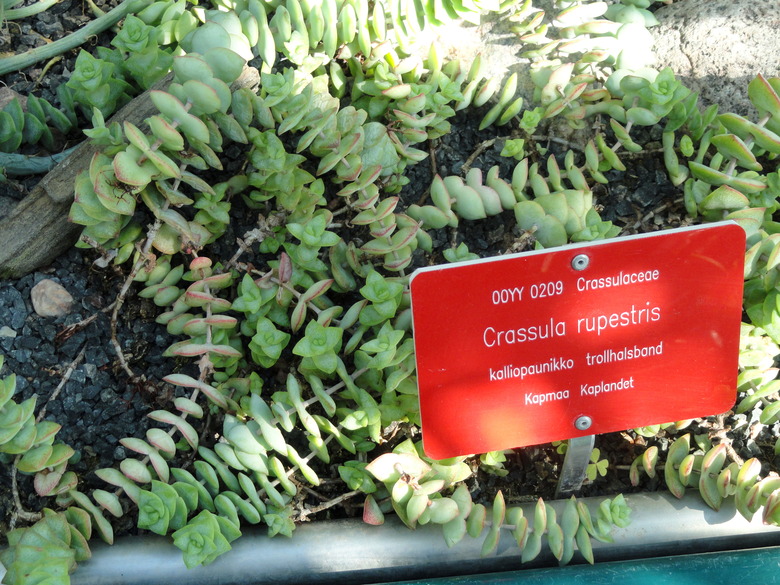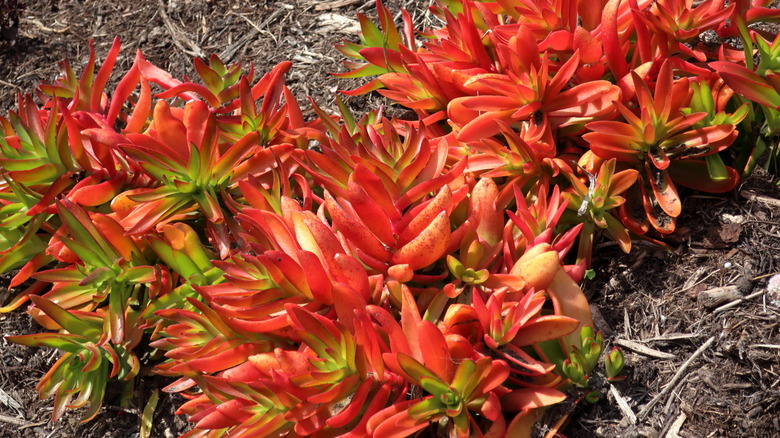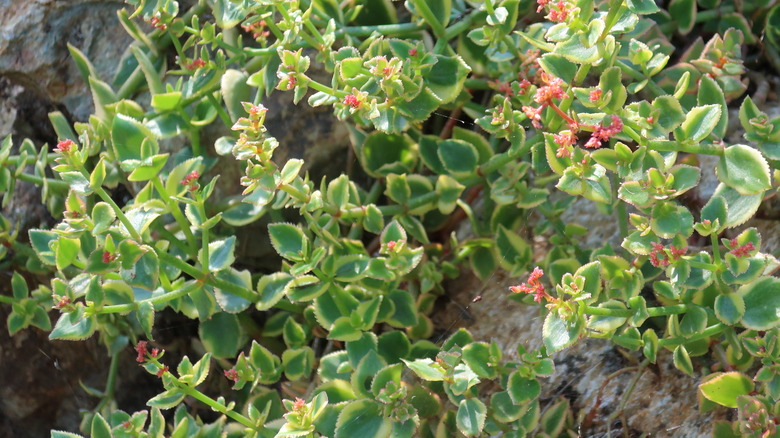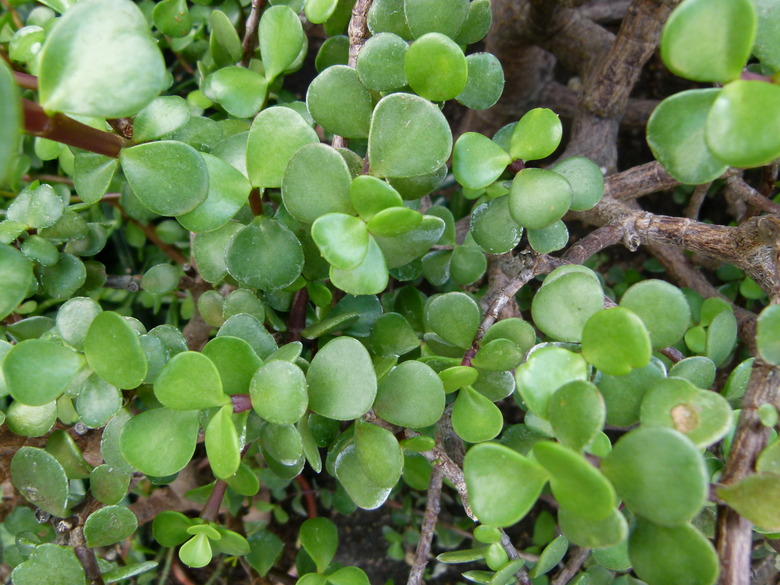Jade Plant Types
With common names including money plant, money tree, good luck plant, lucky plant and baby's necklace, different types of jade plants (Crassula spp.) populate a diverse spectrum within this genus of succulent plants.
Whether you grow these succulents as a houseplant, a bonsai tree or a component in your landscaping design, you're among the ranks of gardeners who have discovered the ease of plant care for these low-maintenance and drought-tolerant gems.
With approximately 300 species and numerous cultivars in the Crassula genus, most are collectively called jade plants, although additional common names are assigned to individual specimens based on their growth habit and unique appearance. These frost-tender plants are hardy only in USDA zones 9 through 12, depending on species and cultivar, which is why most gardeners enjoy them as indoor plants.
Here's a review of five commonly grown jade plants, grouped by species.
Crassula Ovata
Among the different types of jade plants, perhaps the most ubiquitous is Crassula ovata. This plant grows as a small succulent shrub with a potential height of 6 feet in its native habitat in South Africa.
Tip
This jade plant is sometimes called common jade and resembles a miniature tree with thick, oval-shaped fleshy leaves, which is why it's sometimes called jade tree,
Green leaves adorn most plants in this species, although variegated jade (Crassula ovata 'Variegata') has leaves of green and cream. Here are some other cultivars:
- Gollum jade (Crassula ovata 'Gollum') has red-tinged, tubular leaves that look like they have suction cups on the tips.
- Hobbit jade (Crassula ovata 'Hobbit') resembles Gollum jade with denser foliage and the red coloration concentrated at the tips of the leaves.
- Harbour Lights (Crassula ovata 'Harbour Lights') has smaller leaves than the species and other cultivars, with red leaves that deepen in intensity during early winter and persisting throughout the winter months.
- Hummel's Sunset (Crassula ovata 'Hummel's Sunset') has green leaves tipped with red and golden yellow hues.
Although jade plants do produce star-shaped flowers in warm climates where they grow outside year round, indoor plants don't often bloom. But you may be rewarded when you see small white flowers or pink flowers on your plants.
Crassula Arborescens
Silver dollar jade (Crassula arborescens), also called blue bird jade, gets both common names from the appearance of its rounded, blue-green leaves that are edged in red.
Ripple jade (Crassula arborescens undulatifolia) is one of the naturally occurring jade plant varieties. As its common name hints, the edges of its leaves are rippled or wavy.
Crassula Rupestris
One of the different types of jade growth habits is cascading or trailing. Commonly called string of buttons or necklace vine, Crassula rupestris is suited for hanging baskets or as a groundcover. Each small leaf looks pierced by the wiry stem, resembling a necklace.
Baby's necklace jade (Crassula perforata x Crassula rupestris v. marnieriana 'Baby Necklace') is a hybrid cross of this species, featuring smaller leaves than the species that form a smaller "necklace."
Crassula Capitella
Another growth form among different types of jade plants is a rosette of leaves. Campfire jade plant (Crassula capitella 'Campfire') produces leaves around a central stem, which forms the rosette shape.
Plants have green foliage when grown in shady conditions, but they turn brilliant shades of pinkish-orange when in direct sunlight. Curiously, though, the leaves revert to green when plants are given too much water, even when growing in a sunny spot.
Crassula Sarmentosa
Some jade plants combine a trailing growth habit with variegated foliage for a real head-turner effect. One of these plants is Comet variegated trailing jade (Crassula sarmentosa 'Comet'). The stems may trail to 3 feet, with green leaves that are edged in cream.
Given full sun, the leaves have red tips along the creamy margins. As with all Crassula species, this species originally hails from South Africa.
Portulacaria Afra
Not to be confused with "true" plants in the Crassula genus is another plant with common names that include dwarf jade plant and miniature jade. Also called elephant bush, Portulacaria afra (USDA zones 9 to 11) is a succulent plant with origins in Africa but is not related to "true" jade.
